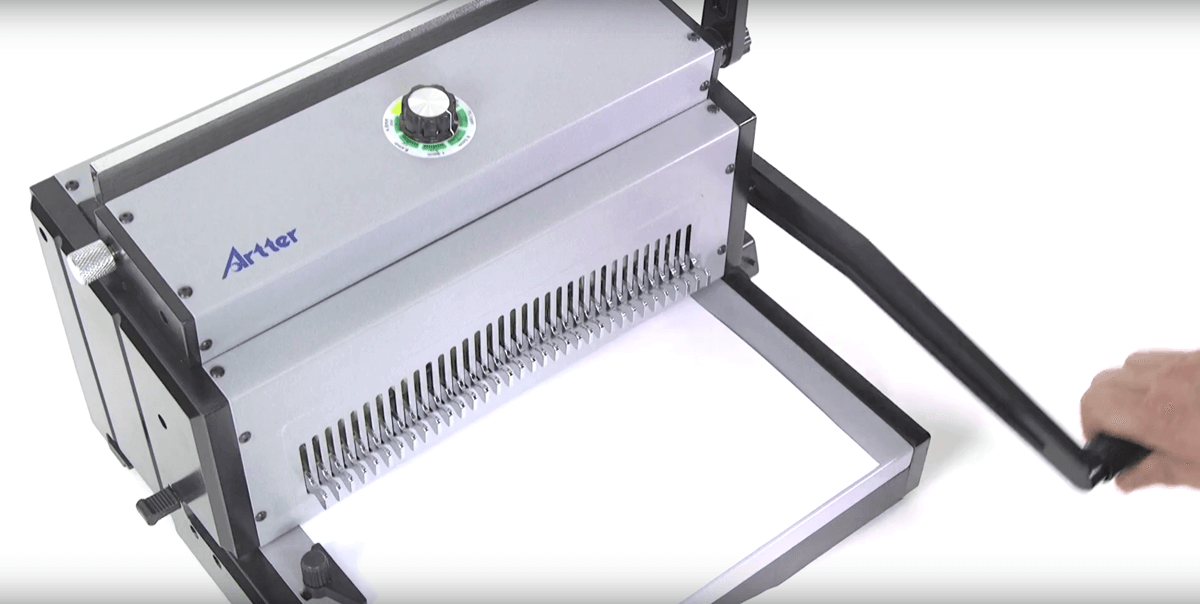NEWS
Tips For Purchasing a Binding Machine

Binding Machine
One of the reasons for the famous maxim “Don’t judge a book by its cover” is because appearance can be deceitful. But for a well-researched writing project, the outlook of the document is a complementary appeal to readers. Binding your proposals, reports, and other written pieces is an excellent way to achieve professionalism and competitive advantage.
There are different methods and criteria for binding files. To get started with deciding what binding machine to use, you must evaluate various factors. And in doing this, below are the questions you should answer.
- What are your routine projects? If you run or work in an office with much research paperwork, you should be targeting a high-performing binder. Here, you’re essentially reviewing the capacity of your desired binding equipment relative to available work.
- What is your suited binding style? For your mails, although it’s a swift process, you need to get the type right. Different businesses work best with varying styles, according to their priorities. Some patterns are Wire-O, Therm-a-Bind, VeloBind, and Plastic Combs.
- Which binding equipment is users’ favorite? As applicable while making other purchases, you should research customer reviews. Not minding your budget, prior users are the right people to foretell the viability of a selected product. That’s how to know which brand to go for or avoid.
- Is the bound document sensitive? Document protection is another consideration when choosing binders. Aside from prying eyes, you need to shield your pages from damage from environmental conditions or pests.
- What’s the extent of use? If you want it in your home office, a simple machine is appropriate. For a larger office space, you can get a complex and high functioning one to hasten work.
If you’re interested in buying a binding machine, you must know the common types. They include the wire loop, plastic comb, thermal, and spiral binders. For easy hand-off flipping of your book pages, they offer numerous glue and stitch bonds. Let’s discuss each of them.
1. Wire Loop Binding Machine
Wire loop binding is similar to a comb binding but more attractive. The design for this machine uses double loop wires. Wire-bound documents are difficult to amend or alter, keeping them secure. It’s an excellent alternative for binding invoices, sales files, classical documents, etc.
2. Plastic Comb Binding Machine
This is a popular operator in most workspaces. It punches several holes along the edges of amassed papers for the insertion of combs. It’s cheaper than others and best for documents with lower usage quality like brochures, jotters, etc.
3. Thermal Binding Machine
It’s also referred to as a “Tape Binding machine.” They are unique for using thermal heat and taping glues to hold paper stacks together. It accommodates up to 500 sheets at once of about 2 inches thickness. In addition, it’s a high-volume and stylish binder.
4. Spiral Binding Machine
Coil or spiral binding is a blend of comb and wire bindings. The machine is the most expensive of all and it’s available in electrical and manual configurations. With desk and floor model options, you can punch your papers, insert coils, and trim coil ends. Spiral binding is fiddly achievable with bare hands, but the machine gives a perfect finish.
Highlighting your needs is the first step of your decision-making process. That involves your tasks, styles, and other factors mentioned above. We recommend you opt for a simple, easy-to-operate, and affordable type.
Kenneth is a proud native of sydney, born and raised there. However, he pursued his education abroad and studied in Australia. Kenneth has worked as a journalist for almost a decade, making valuable contributions to prominent publications such as Yahoo News and The Verge. Currently, he serves as a journalist for The Hear Up, where he focuses on covering climate and science news. You can reach Kenneth at [email protected].










